The best fig trees – to grow indoors and out
Discover the diversity of these vibrant plants and find out the best fig trees to grow indoors and out

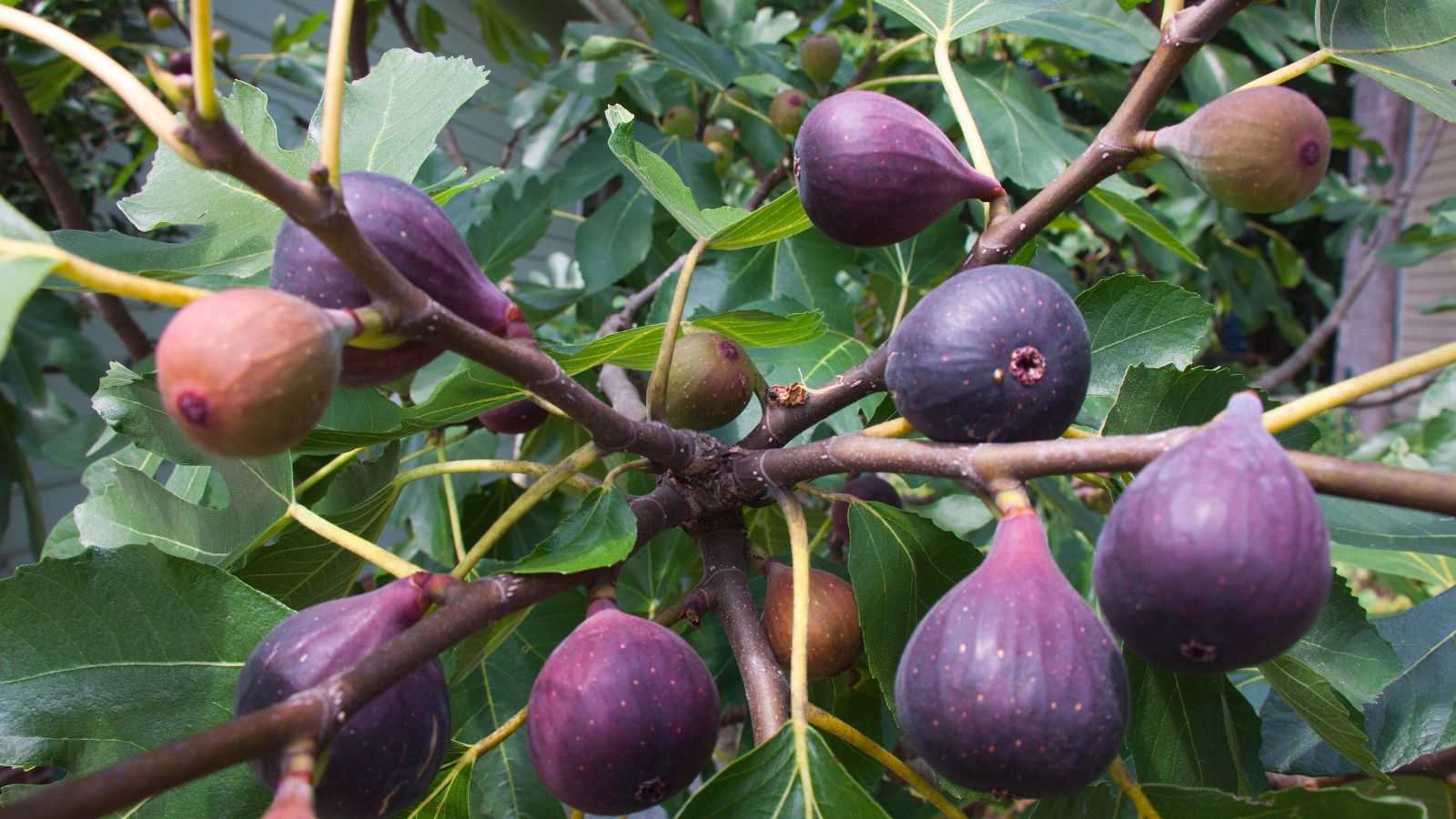
With over 800 species including both ornamental and edible varieties, this shortlist of the best fig trees will help you find one to suit your home or yard.
Originating from warm temperate and tropical climes, these versatile plants are simply magnificent. Fast growing, vigorous and bearing deliciously sweet fruit, they need little attention. Most are relatively easy to grow, too.
Choose from evergreen or deciduous varieties and grow fig trees as shrubs or climbers. Their foliage is rather impressive too, ranging from large leathery leaves with their distinctive veining to more delicate oval leaves on slender, arching branches. Unusually, figs do not have visible blooms. Instead, the tiny flower sits inside the immature fruit and is fertilized by small wasps before maturing into the recognizable oval shaped fruit. These trees are also monoecious meaning that a single tree possesses both male and female reproduction organs so is self-fertile.
The best fig trees
Depending on your climate, figs can be grown either outdoors in a border or container or, in cooler climes, inside as one of the best indoor plants. Most cultivars will happily thrive unprotected in USDA Hardiness Zones 8-10 while some hardy varieties can cope in Zones 6-7 with some frost protection.
1. Common fig or Fiscus carica

USDA Growing Zones: 8-10 although some varieties will grow in zones 6-7
Light levels: Full sun
Mature height: 10-13ft (3-4m)
Design expertise in your inbox – from inspiring decorating ideas and beautiful celebrity homes to practical gardening advice and shopping round-ups.
Also widely known as ‘San Pedro Black’, ‘Black Spanish’ or ‘Brown Turkey’ fig, this popular variety loves moist well drained soil and a sheltered spot outside. Relatively slow growing, taking between 10-20 years to reach maximum height, it is a great architectural option for wall side border, urban or protected courtyard gardens.
The Common Fig is our go-to fig for growing outdoors as it is hardy down to 14℉ (-10℃),’ says Abigail Willis from Ashridge Nurseries. ‘This self-fertile variety crops reliably but needs a warm, south or east facing position. It can become sizeable – keep its vigorous habit in check by lining the planting hole with concrete slabs or a thick membrane.
'This variety also looks fantastic trained as a fan against a sunny wall,’ Abigail continues. ‘Prune out old wood in winter and remove any large unripe fruits, leaving the marble sized figlets to develop into next year’s crop.’
Ficus carica plants are available to buy at Amazon.
2. 'Violette de Bordeaux' fig

USDA Growing Zones: 7-10, zones 5 and 6 require protection
Light levels: Full sun
Mature height: 9ft (3m)
Said to be the richest and sweetest dark fig of all, this variety dates from around 1680 when it was discovered in the gardens of the Palace of Versailles outside of Paris, France. Providing two abundant crops a year – ready to harvest in late spring and fall – you will never be short of fruit to enjoy fresh or dried.
A hardy fig, it will thrive in colder climates and is suitable for planting in large containers provided they have fertile well-draining compost. Place in full sun in a sheltered position and aim to repot container grown figs every two years.
‘Some varieties such as Brunswick and Violette du Bordeaux are naturally somewhat dwarfing,’ says Michael Dolan, Owner of Burnt Ridge Nursery & Orchards, Inc. ‘All our fig varieties are self-fruitful. Unlike most fruit trees that are grafted, figs are grown from cuttings, allowing the option of growing them as a multi stemmed shrub. Growing them this way can allow them to be kept as an 8 foot bush, with a little early summer pruning annually.’
Violette de Bordeaux fig plants are available to buy at Burpee.
3. Chicago Hardy Fig Tree
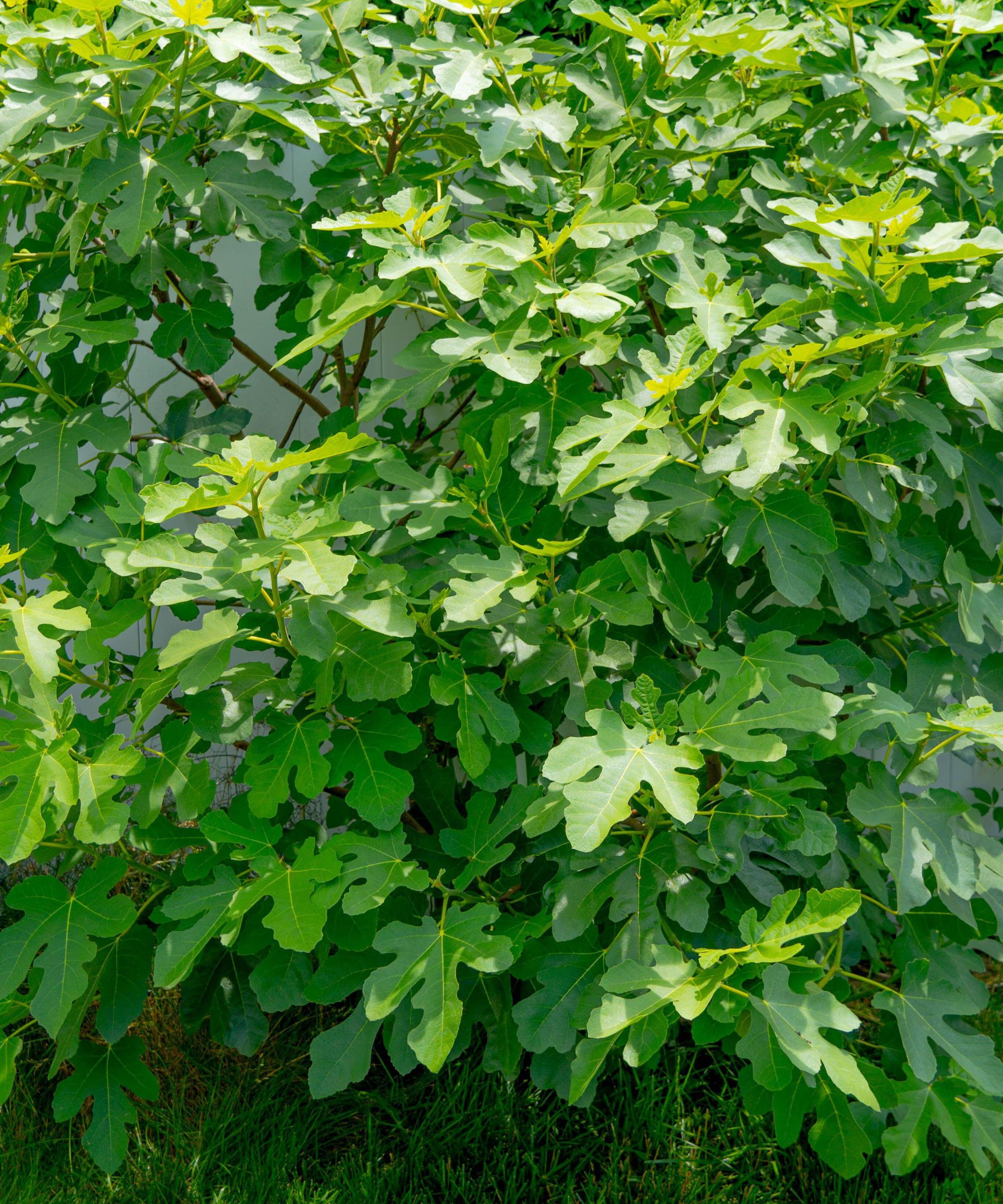
USDA Growing Zones: 5-8
Light levels: Full sun
Mature height: 10-15 ft (3-4.5m)
As the name suggests, a cold tolerant variety that produces small purple-brown fruit. Easy to grow and relatively fast growing once established, this fig can die back to the ground in colder periods before shooting again in the spring.
Bearing large, dark green three-lobed leaves and green fruit that darken as they mature, this attractive variety is happy grown in a container. Just be sure to choose a large pot with ample drainage and fertile, well-draining compost.
When it comes to position, a sheltered spot, possibly next to a south facing wall is ideal. ‘Figs need to be planted where they receive at least 8 hours of direct sunlight measured in early summer (late June to early August),’ says James Owen of Raintree Nursery.
‘Sufficient sun exposure triggers the initiation of new flower buds for the next growing season, without which there will be no fruit. Fruit ripening and flavor development are also benefited by the carbohydrate production stimulated by the sun, as well as it’s heat, so choosing a location that is protected from wind or has a lot of reflected heat will benefit plants grown in cooler summer locations.’
A real bonus of this hardy fig is that it is also largely disease and pest resistant. Once established it can also cope with drought conditions, thanks to its vigorous root system.
You can buy Chicago Hardy fig tree plants from Burpee.
4. Little Miss Figgy
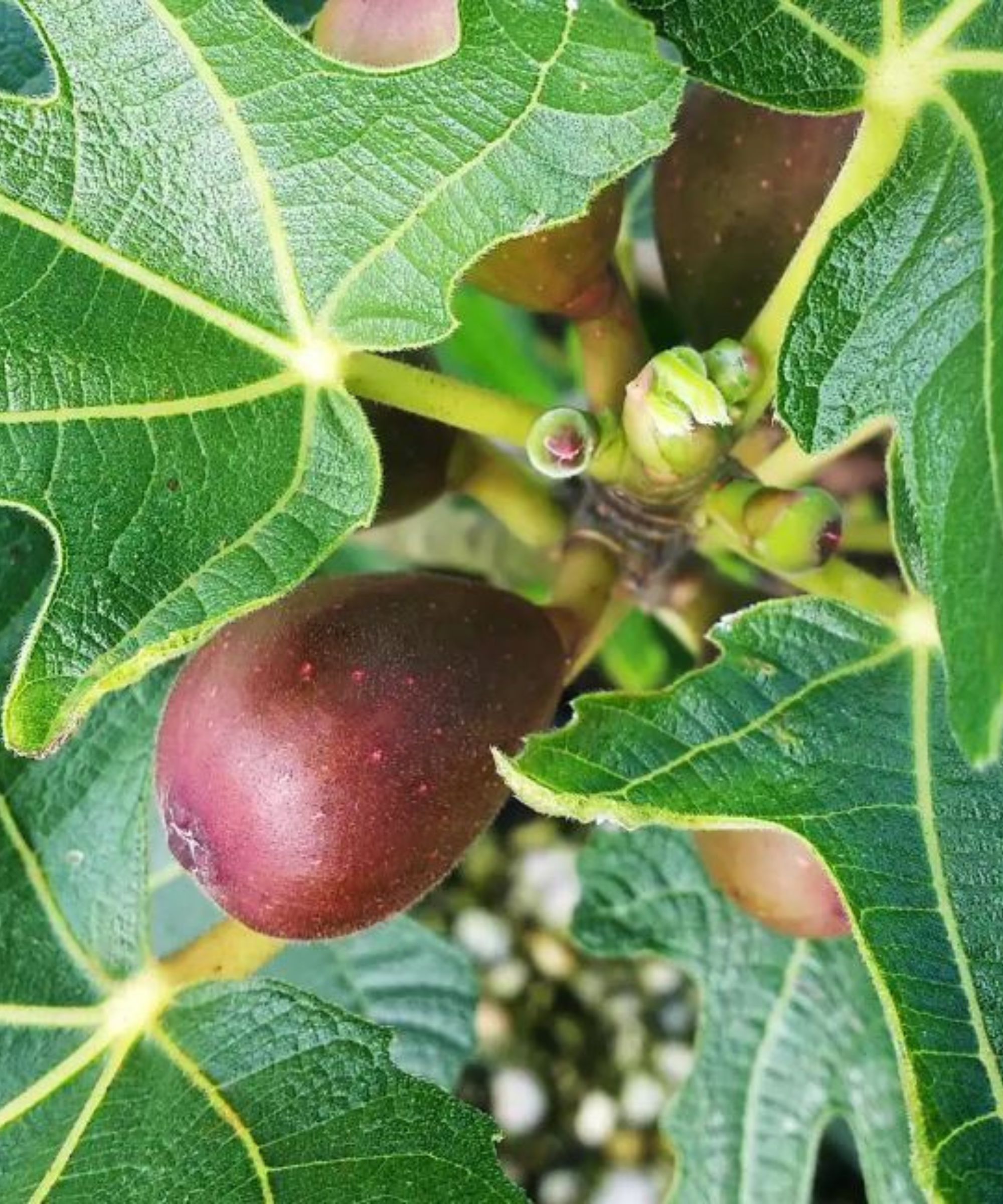
USDA Growing Zones: 7-10
Light levels: Full Sun
Mature height: 6ft (2m)
A dwarf mutation of the traditional variety 'Violette de Bordeaux' this relatively new fig is becoming hugely popular.
‘Who could resist a fig called ‘Little Miss Figgy’?’ says Abigail Willis from Ashridge Nursery. ‘This naturally dwarf fig is a shoo-in for small spaces and patio pots, growing to a manageable 6 or so feet (2m) height and spread.
'You’ll only need one tree as this little miss is self-fertile and produces a generous harvest of small, sweet purple figs in August. Eat, sun-warmed, straight from the tree or use for cooking. Although relatively hardy, this variety prefers a warm sheltered spot – somewhere out of cold winds with plenty of sunshine is ideal.’
A deciduous fig, meaning they will shed leaves in fall before regrowing in spring, treat them as a freestanding bush tree or, for a highly decorative display, fan-trained against a south or south-west facing wall.
‘If grown against a wall it should be planted approximately 10in away from the wall to avoid it being in a rain shadow,’ advises Jon Munday from Blackmoor Nursery.
You can buy Little Miss Figgy plants at The Home Depot.
5. Indian Banyan Fig or Ficus benghalensis
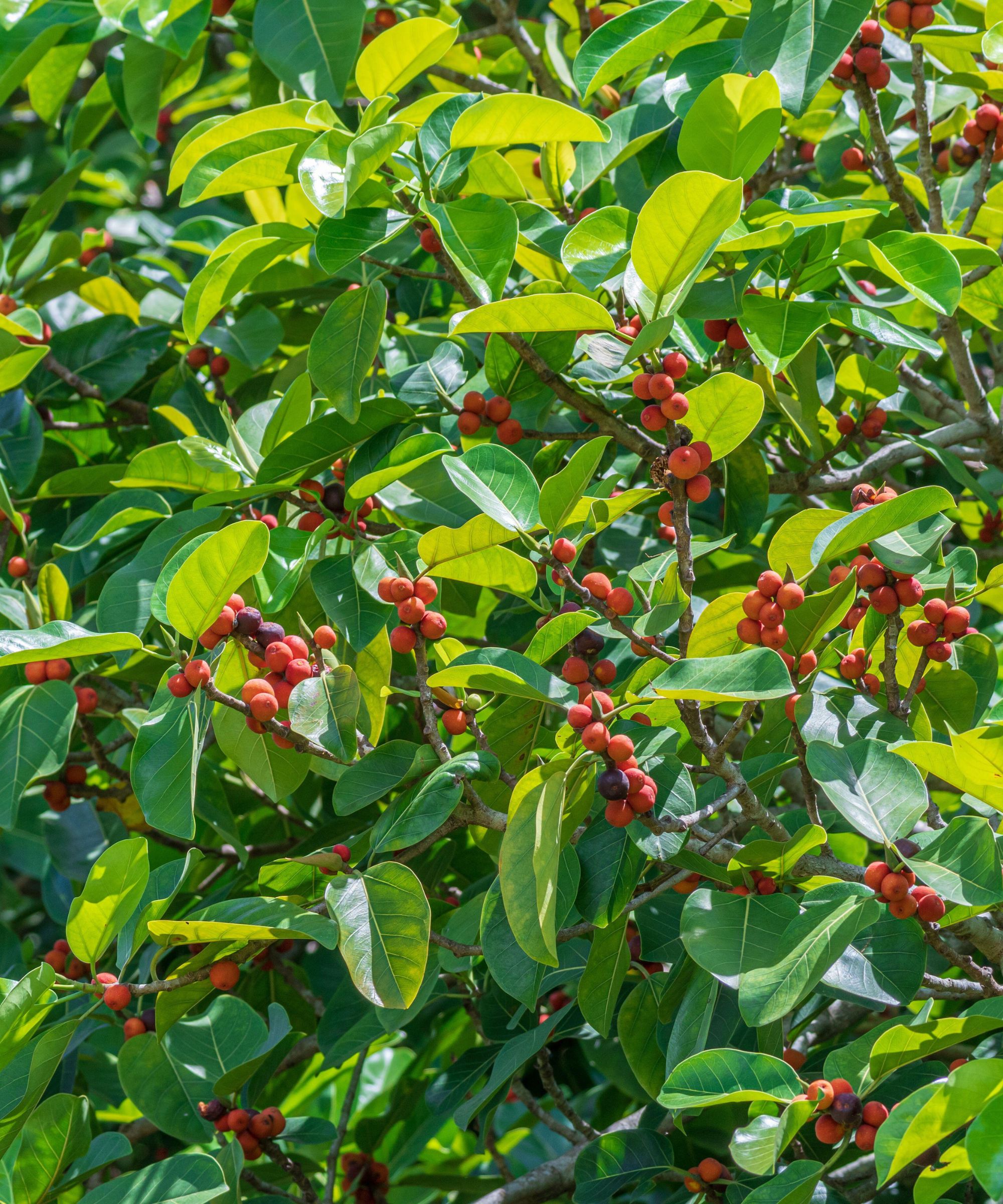
USDA Growing Zones: 10-12
Light levels: Sun to part shade outside. Inside bright indirect light, avoid harsh direct light
Mature height: Upto 100ft (30m) in natural habit
Amongst some of the largest canopy trees on the planet, Banyan Figs are frost tender so are best grown as an indoor plant unless you live in a warm climate. An epiphyte or air growing plant, these figs absorb moisture from the air and grow in the crevices of rainforest trees and rocks. Both the branches and trunk send aerial roots down to the ground, giving the impression of the tree having multiple trunks and enabling it to establish over a wide area. With the largest specimen known to cover several acres it’s wise to avoid growing it near house foundations, drive or pathways.
Indoors, these plants are prized for their large glossy green leaves that spiral out for the main stem, creating a very glamorous feature for any brightly lit room. To replicate its natural habitat, they hate to be in any cold draughts or breezy spots – a temperature of 60-74℉ (16-24℃) is ideal. Mist the leaves occasionally and wipe over to keep them dust free.
When it comes to watering the Indian Banyan fig, the compost should be moist but not soaking. Avoid letting the roots sit in water as this will cause them to rot and the plant to die. ‘Allow the top couple of inches to dry between watering to avoid overwatering,’ advises John Maree of Oxy-Plants. ‘A great way to gauge this is to place your thumb in the soil. If it’s dry, it’s time to water.’
You can buy Indian Banyan fig seeds on Amazon.
6. Red Leaf fig or Ficus ingens

USDA Growing Zones: 10-11
Light levels: Full sun
Mature height: 49ft (15 m)
Loved for its olive green, heart-shaped foliage, the red leaf fig is a great choice for adding color and character to an outside space. Semi evergreen, these sizeable figs have a short deciduous period before the leaves re-emerge in spring, as rust red shoots.
Small and spherical figs are produced mainly in summer and ripen first as white before turning to yellow-brown or purple.
Known as the ‘rock-splitter’ this fig has particularly vigorous and rapidly growing roots so do avoid growing it in open ground near to buildings, paving or driveways. It’s also best avoided in small yards unless grown in a pot.
‘In really cold regions, figs can be grown in containers, given some protection over winter,’ says Michael Dolan, wwner of Burnt Ridge Nursery & Orchards, Inc. ‘In a 5-gallon pot with large drainage holes, the pot can be partially buried in the garden to allow the roots to escape the confines of the pot over summer. In fall, any escaped roots can be cut off, and the pot moved to a pumphouse or other sheltered spot. When dormant they don’t need light. In the spring they can be replanted in the garden. ‘
Another option is to grow this fig as a beautiful bonsai. Thanks to its smooth gnarled gray bark and dynamic nature it is a popular choice.
7. Creeping fig or Fiscus pumila
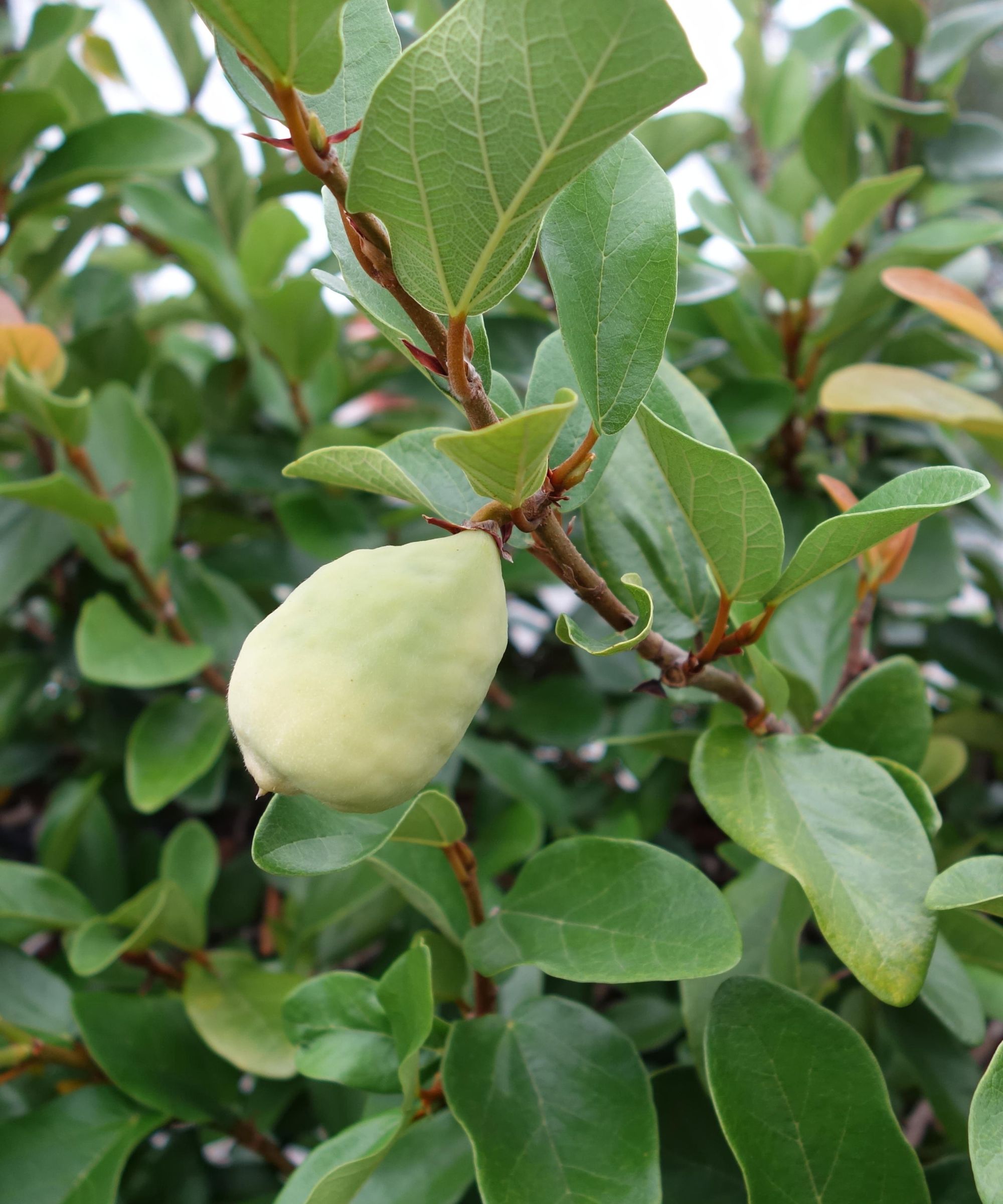
USDA Growing Zones: 8-11
Light levels: Outside: Full sun/ Inside: Avoid direct light. Prefers bright to semi shade.
Mature height: up to 10ft (3m)
An evergreen, self-clinging climber, the Creeping fig with its heart shaped green leaves can be admired indoors or out. Fast growing and extremely undemanding, it can scale walls or moss poles or trail elegantly from a hanging planter or high shelf. To keep it in check it is best to prune back hard in spring, by as much as a third.
As an indoor plant, it likes to be pot bound, but it is best to repot it every couple of years and trim back any wayward stems. Happy at temperatures between 55 – 75°F (13 – 24°C) this fig likes to grow in well-draining, aerated soil that once soaked thoroughly remains slightly moist. Do avoid leaving the plant in standing water though, as this will lead to root rot.
It’s also worth noting like most figs, this plant is toxic to cats and poisonous for dogs, so is best avoided by pet parents.
You can buy Creeping fig plants on Amazon.
8. Black Mission fig tree or Ficus carica 'Mission'
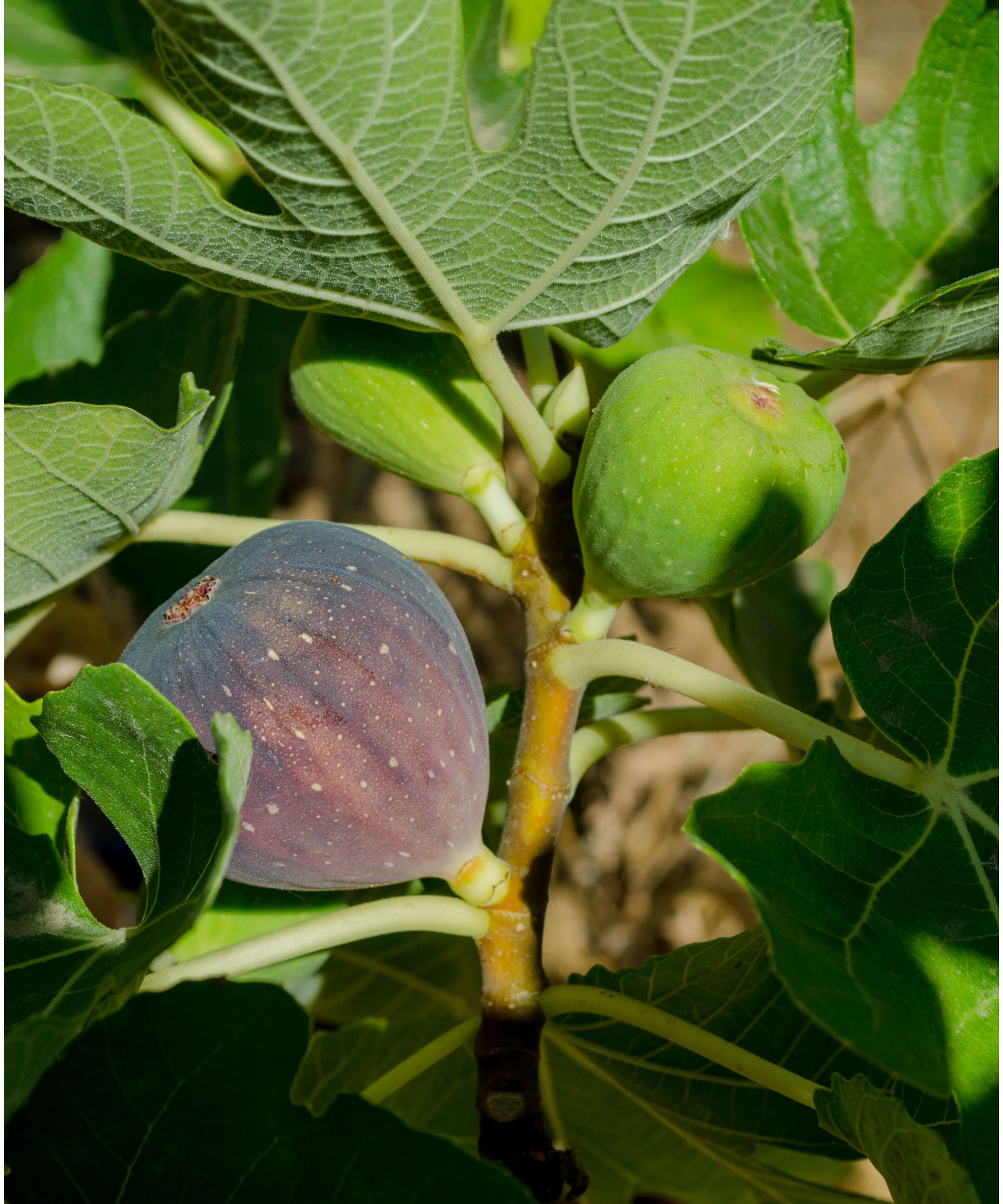
USDA Growing Zones: Outside 7-10; Outside in containers 3-6
Light levels: Part to full sun
Mature height: 98ft (30m)
Introduced to the US in 1768 and grown outside either as a multi-stemmed shrub or tree, this attractive fig is particularly easy to grow. With exceptionally large green leaves with prominent pale green veins, it makes a spectacular focal point in any yard. Thanks to its vast height and spread it is also useful for screening less than lovely features. It’s also an ideal choice for a windbreak.
‘The Black Mission Fig Tree is one of the most popular figs originating from Spain and brought to North America by Spanish missionaries,’ says Jason Willis, Owner of Willis Orchard Company. ‘Our Black Mission trees produce a medium to large, pear-shaped, purplish-black fig. Once you plant and harvest this fig tree you will notice its flesh is strawberry colored and exudes excellent flavor. Many experts consider this fig to be the best all-round variety.’
With two yearly harvests – in spring and early fall – its worth knowing that this fig starts producing fruits earlier than many other varieties. Also once established it is fairly drought resistant making it particularly low maintenance.
Hardy in USDA zones 7-10, the Black Mission fig trees can also be safely grown in pots in zones 3-6, as long as they are moved inside before winter sets in.
‘In really cold regions, figs can be grown in containers, given some protection over winter,’ says Michael Dolan, Owner of Burnt Ridge Nursery & Orchards, Inc. ‘In a 5-gallon pot with large drainage holes, the pot can be partially buried in the garden to allow the roots to escape the confines of the pot over summer. In fall, any escaped roots can be cut off, and the pot moved to a pumphouse or other sheltered spot. When dormant they don’t need light. In the spring they can be replanted in the garden.’
You can buy Black Mission fig tree plants at The Home Depot.
9. Rubber Tree or Ficus elastica
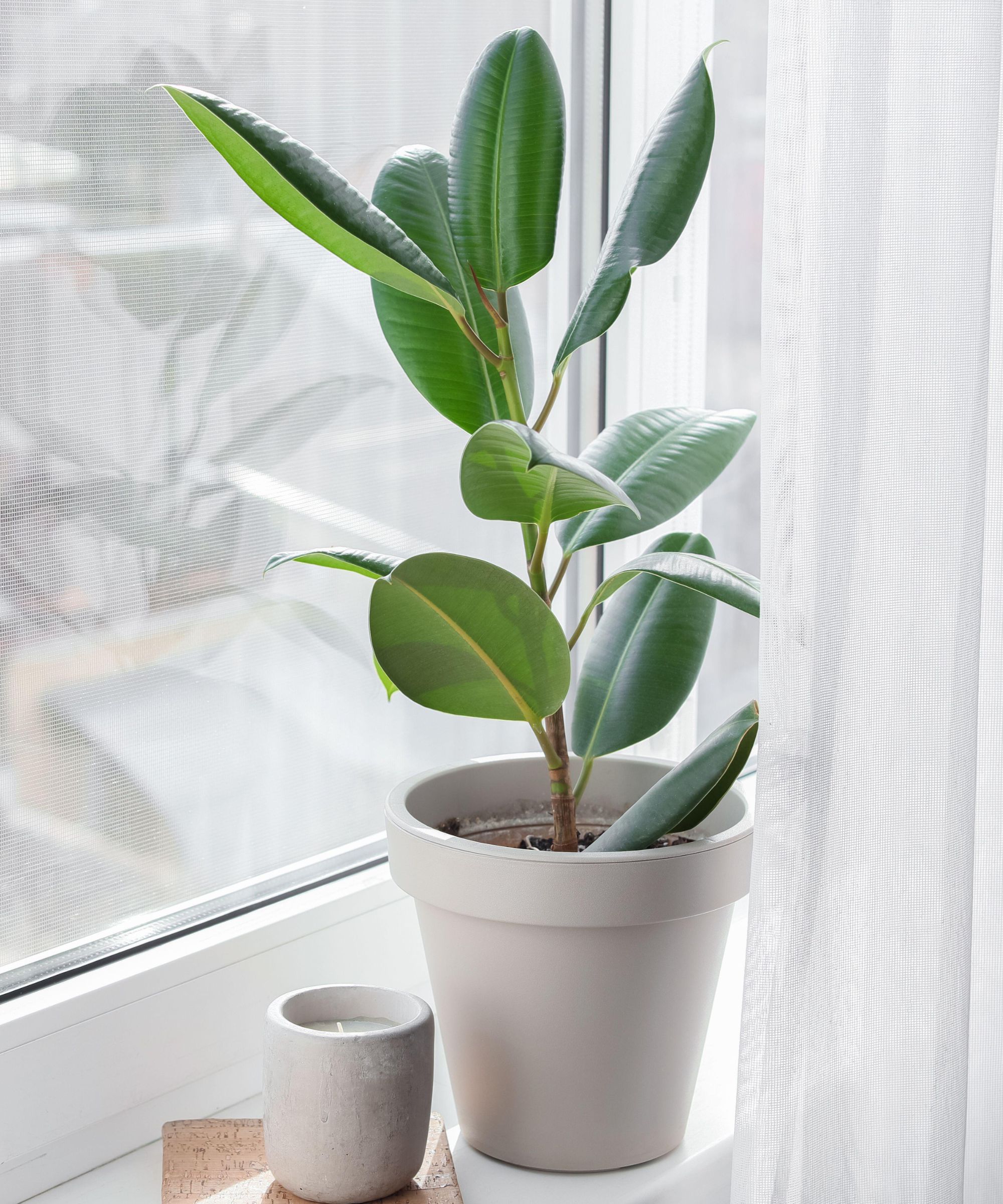
USDA Growing Zones: 10-11
Light levels: Outside: Light dappled shade to full shade / Inside: bright indirect light
Mature height: 196-328ft (60-100m)
A giant in its native habitat which includes India, Malaysia and Java, this well-known plant with its handsome round glossy leaves can reach a lofty height of nearly 100ft. Fortunately indoors it, at best, manages a more modest 6.5ft (2m) but is no less majestic.
Place in a warm, bright spot out of any chilly drafts and a rubber tree will last for years if not overwatered and fed monthly with a liquid feed from March through August. ‘The best advice we can give is to neglect your ficus tree a little – it will grow stronger if you only water it once the top layers of soil are dry: the worst thing you can do is to overwater – as is the case for most of our tropical houseplants,’ says Mark Lawlor of Happy Houseplants.
If you live in USDA zones 10 or 11 you can grow these striking plants outside. Ideal as a patio plant or privacy screen, they certainly make an impact. To keep them in check, nip out the growing tip and prune branches for a compact shape. Just watch out for the sticky latex than can cause skin irritation. Plant either in a border or in a large container on castors – especially useful if you like to change your patio layout regularly – and water thoroughly allowing the compost to dry out in between. Feed with an acid-based fertilizer during late spring and summer.
You can buy Rubber tree plants on Amazon.
10. Weeping fig or Ficus benjamina

USDA Growing Zones: 10 and 11
Light levels: Bright, indirect light. Avoid direct sun
Mature height: Indoors: 10ft (3m) Outside: 60ft (18m)
Graceful and informal with tree-like looks, the Weeping fig is an ever-popular indoor plant. Perfect for adding character and interest to an empty corner or stairwell, its dense glossy green or variegated foliage hangs elegantly from slender branches. Choose from plants grown as a standard, with or without plaited stems or as a fuller shape with lower branches intact.
Well suited to average room temperatures of 60-75℉ (16-24°C), this plant loves bright but indirect light and the occasional misting with a water spray. These attractive plants do have a reputation for being rather diva-ish though. They dislike being moved, dropping leaves as a result and do the same if light levels are too low, if they are positioned in a draft or if they are overwatered. If fresh growth distorts the overall shape, trimming is possible but be wary of the sticky latex sap as it can be an irritant.
In warm or tropical climes this fig can be grown outside, and if happy it can become a seriously large tree. Best suited to wide open yards they need a minimum of six hours of sun a day and well-draining soil. They will thrive in full shade, part shade or sun and once established are largely drought tolerant.
You can buy Weeping fig plants on Amazon.
11. Fiddle Leaf fig or Ficus lyrata

USDA Growing Zones: 10-11
Light levels: Bright light out of direct sun
Mature height: 3m (10ft)
With its large glossy green leaves, each with nipped in waist and prominent veins, it’s not hard to see why this plant is so sought after today. Growing in a spiralling fashion from the leading upright stem it really is a spectacular foliage plant with tons of impact and character.
‘In the wilds of its native Africa, the Fiddle-leaf fig (Ficus lyrata) can grow into an exceptionally large shade tree. Indoors in a pot, though, it’s much more refined and well mannered,’ says Adele Hack Garden Advisor at White Flower Farm. ‘The requirements for growing this Fig as a houseplant are simple – lots of bright indirect light and regular watering.’
It's easy to grow and care for a Fiddle Leaf fig, but like the weeping fig, this variety can be prone to leaf drop if light levels are too low or if over or under watered. Fluctuating temperatures can be another cause, so aim for steady range of 60-75℉ (16-24℃) and avoid drafts. Aim to water when the top inch (2.5cm) of compost is bone dry and feed monthly with a weak dose of liquid fertilizer from May to September.
You can buy Fiddle Leaf figs at The Home Depot.
What is the easiest fig tree to grow?
The easiest fig tree to grow is the Common fig or Fiscus carica, our number one pick. It loves moist, well drained soil and a sheltered spot in a warm, sunny position. It is relatively slow growing, taking between 10-20 years to reach maximum height (10-13ft), it is a great architectural option for wall side border, urban or protected courtyard gardens. You can harvest figs August through September, and be sure to prune a fig tree in spring to help it produce more fruit and to keep its shape.

Journalist Jill Morgan has spent over 20 years writing and editing gardening, interior and property features. Titles she has worked on include The English Home, House Beautiful, Ideal Home, Houzz and Modern Gardens and she writes regularly for H&G as a Contributing Editor. Whilst she is a dab hand at renovation projects and DIY, she is happiest when out digging in the garden or planning a new border.